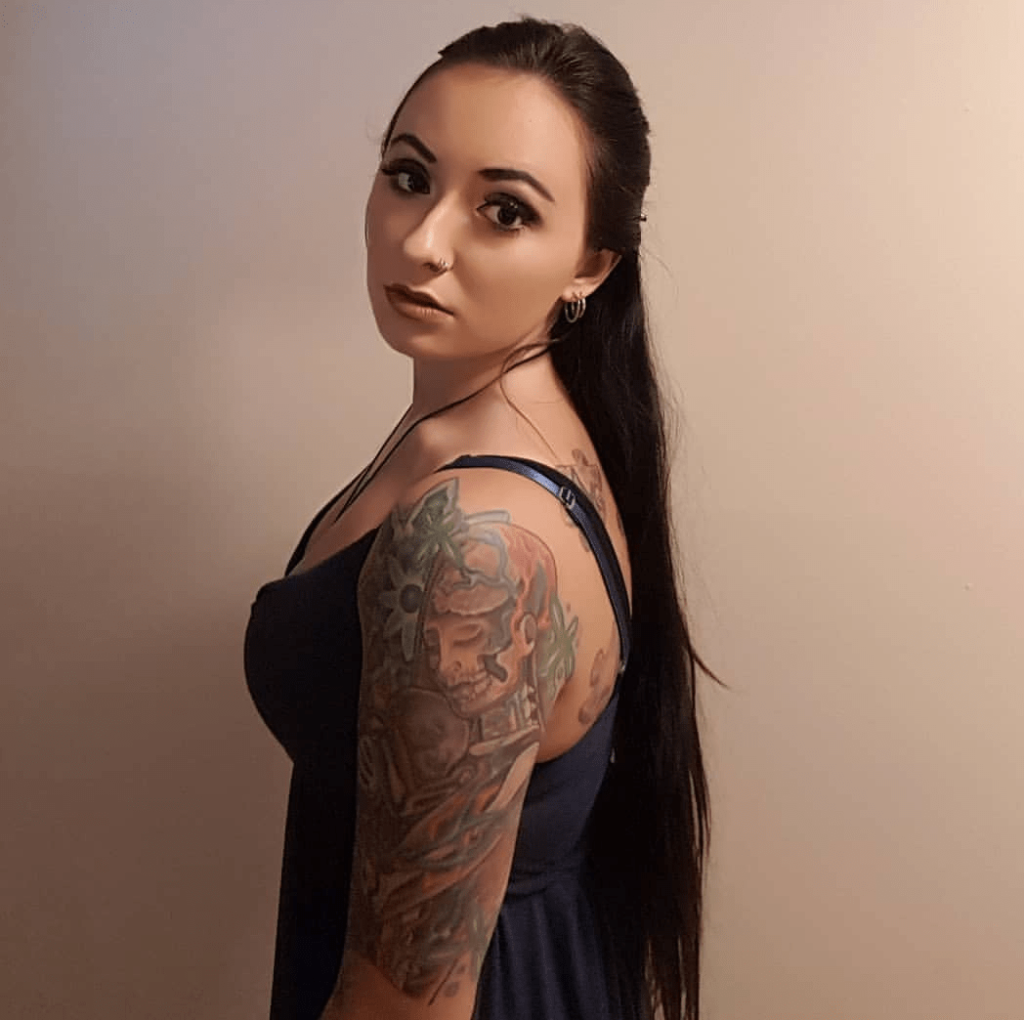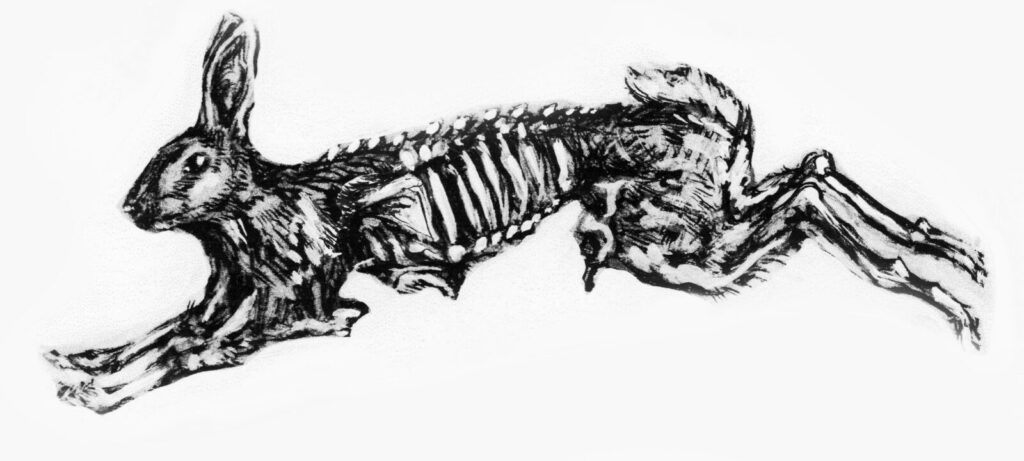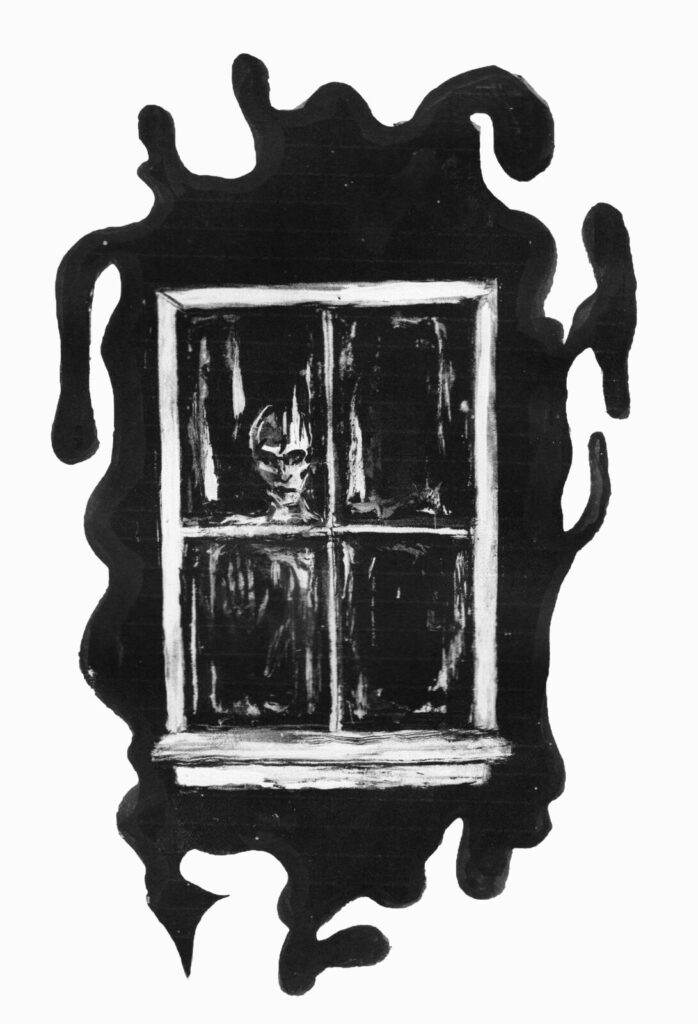It was dark and she was playing dead. Not sure of how to get out of this. Her shallow grave. Her lover’s grasp.
Last October, author Bridgett Eve Howard began writing short vignettes of horror – one a day – her own spin on the new tradition of Inktober. This year, she published these works alongside some genuinely creepy art by illustrator Flannery Grace Vaught in the book 31: An October Collection.
Like all the best horror, these stories tap into deeper fears and vulnerabilities. It isn’t just the monster that is frightening, but also the human condition.

For the protagonists of many of the various stories in this collection, the horror began long before the narrative; these are survivors of loss, of illness, and myriad other traumas. In one story, the end of a romantic relationship coincides with the literal stopping of the world. In another, a survivor of mental illness fights a toxic version of herself in a self-destructive manner. Yet another sees suicidal thoughts become a physical monster, chasing a young woman her entire life, only to overcome her the moment she’s happy and feels she’s finally free of him for good.
“I like when the trauma comes throughout,” said Howard. “I really feel like that’s a real reflection of life. Most of the time you don’t just wake up like this.
The writing is, at times, a bit rough and in need of polish, but that adds to the charm and authenticity of a document that was built out of complete short stories written in quick fashion.
“I’m more of a storyteller than an author,” said Howard. “I do think the tradition of storytelling is more ‘we’re gonna focus on what the person is saying,’ instead of how well they said it.”
This is a small, personal affair, not a product of a literature machine, but of a determined individual putting her own vulnerabilities on display. That is to say, there is more blood on the pages than in just the scary tales. The stories and the protagonists are more than thin creations from an active imagination; these stories are informed by Howard’s own trauma, laid bare on the paper.
“I lost my mother to cancer at 15. It was a very quick process. She was diagnosed on October 29, 2009. She didn’t tell me until November 1st, because she knew Halloween was my favorite holiday,” said Howard. “She was dead the day before Thanksgiving that year – November 25th – so it was three weeks since she had been diagnosed that she passed away.”
The devasting experience took a toll on her psyche.
“It was awful. Her skin turned black. She turned into something very difficult to see. It really ended up playing on repeat in my life for a long time.”
Writing a horror anthology turned out to be a form of coping with demons.
“Almost every single story is a reflection of trauma, of grief, loss, mental illness. Delving into that was the most therapeutic thing I think I’ve done for it,” said Howard. “I felt like I was in a good enough place to finally reflect on a lot of things in my life.”

In one striking example, a story about a decomposing rabbit in the road takes real-life inspiration from the moment she remembers seeing her mother pick up a dead turtle in the road outside her restaurant.
“She picked it up thinking it was fine, and all these maggots poured out of it,” said Howard.
The elegant and macabre rabbit illustration with that story, as with all the illustrations in the book and cover, is the work of artist Flannery Grace Vaught, a friend of Howard’s from their time at Transylvania University who was tasked with bringing the stories to life.
“This is the first time I feel like I’ve gotten to go in this direction,” said Vaught, praising the free rein given to her to create suitably creepy images in the medium of her choosing. She used ink and gesso and a photocopier to create the images, drawing and then copying the layers of the image to degrade them.
“It gives them that gritty, faux lo-fi quality. I like that grit – that layer of dust and dirt that gives a story beyond the story it’s illustrating.”
She wants her work to get inside the mind of the viewer, bringing an added element of darkness to everything she does.
This is not Vaught’s first go-round with horror, however.
“Most of the stuff I do has some darkness in it,” said Vaught. Much of her work involves agrarian life, which is fraught. On a farm, Vaught said, “You encounter life and death all the time.”
There’s a deeper, layered horror in the stories of 31: An October Collection – one that will ring all too familiar for unfortunately too many: many of the protagonists in these stories experience some form of past or present trauma, violence or horror that is specific to women.
“When I was a kid, I didn’t get to watch scary movies,” said Howard. “My mother constantly watched Lifetime in front of me, which was honestly more traumatizing than watching It, or The Shining, or something, because it was always women in danger. And my mother was also somebody who experienced a lot of violence in her life.”

A first-time female hitchhiker in danger reflects on how her brother was able to effortlessly make his way cross-country. A teenage girl plays possum while her abusive lover buries her, believing her to be dead. A woman faces down a possibly supernatural stalker. Many of the monsters in this book are scary not because they’re superhuman or supernatural, but because they are the monsters women face every day of their lives.
“That’s always been reflective of me – I’m a woman, I have to be on edge because I’m a woman,” said Howard. “There’s an experience in being not-male that is just vulnerable and unfortunately opens you to more fears. You feel the need to protect yourself more. You feel the need to be on that edge.”
That edge finds its way into the characterization in the stories, a great many of which are told from a first-person perspective.
“I like to have that connection,” Howard said of her protagonists. “I try to make every character its own character, but ultimately it’s just me with different wigs on.”
She hopes that others can relate to the stories she has written.
“But I also decided that if they didn’t…if it wasn’t good, if nobody enjoyed it, then it still served its purpose for me,” said Howard. “Luckily, that’s not been the case.”
31: An October Collection is available via Amazon.com or at Barnesandnoble.com.




